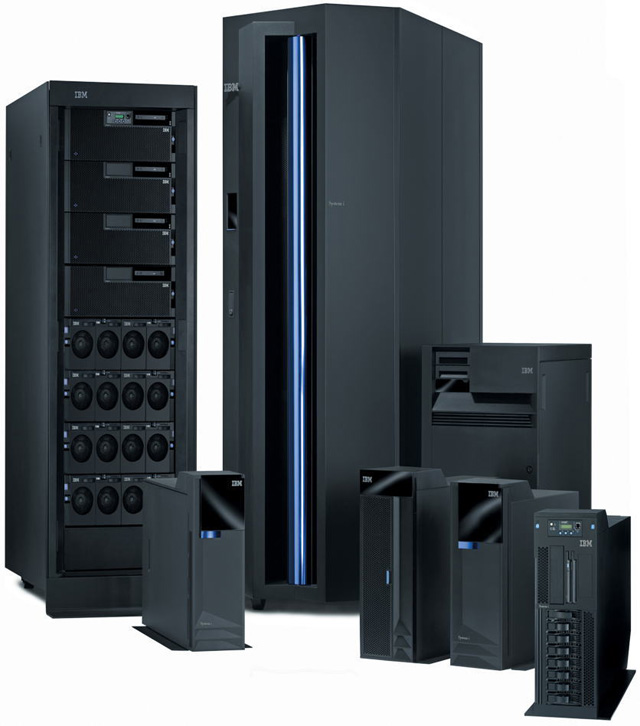Contact Us
- Call Now:(01)773-455-6676
- Sales Email:sales@dedicatedhosting4u.com
- Support Email:support@dedicatedhosting4u.com
- Billing Email:billing@dedicatedhosting4u.com
Close Support
Dedicated Games server setup is challenging ? Lets Discus solution.
Dedicated Games server setup is challenging ? Lets Discus solution.
Identifying the correct hardware solution for dedicated games server deployment. Gaming has grown to be an influencing industry during the past few years. It is now creating a hype among all age groups and there are great business opportunities to be leveraged here. Although gaming has crossed the age group barrier, designing and implementing strategies for a gaming project may sound quite challenging. For establishing your brand in the gaming arena, you need to know about selecting a perfect server configuration for deployment.
The main challenges of these game servers are the performance, the quality of the experience that is a challenging task. Games like Call of Duty: Modern Warfare 2took the challenge of deploying these on a gaming servers. While coming to the establishment of your own server the first thing that you have to keep in mind is that whether your internet connection will be able to handle it. Speed of the internet connectivity should be at list 1Gbps.
Mandatory requirements for running a dedicated game server
There is a great difference between a dedicated game server and a usual web server. This difference may be usually on the type of data requests that are sent back and forth to the server. In a web server, there is usually data transfer from a user and the server itself. On the other hand, a gaming server will have third person in the scene. It can be another player located at a distant area, as far as multiplayer online games are considered. Moreover this server needs much more bandwidth capabilities if you are providing games that are graphic intensive.
An effective dedicated game server should be able to
• Manage multiple users in parallel
• Handle numerous games in one system
• Interconnect the gaming users available
Prerequisites for a dedicated game server
The prime requirement here is well-equipped high performance hardware for running the server. That will require a high end configuration server like 12 GB RAM, Dual Xeon E5645 Six Core Processor. A dedicated game server may require backups frequently depending on the type of games that run on it. As said, on the client side the user may lose the data which can be recovered through the server. This can be the high scores in a game or simply just raw data. A gaming server will need a high-end hardware configuration to run efficiently. Although the initial cost of deployment is a bit high, the outcomes of the same are pretty pleasing. Once you have a team for assistance, things will be up and running soon!
www.dedicatedhosting4u.com has come up with a High-end configuration server with 24×7 Support and extended support on a affordable extra fee. You can visit by clicking here and have a look on configuration of the specialized servers for game deployment.
Lets talk about a Case Study , This case study will demonstrate you the challenges involved in Game implementation and Hosting.
Consider the “Awakening of Heroes” case study.
Awakening of Heroes is a free-to-play 5v5 MOBA (Multiplayer Online Battle Arena) game for iOS and Android smartphones that includes RPG and battle royale aspects.
Impact on the Whole
The cost-cutting part of the project, as well as the total income, have the most visible influence. This was accomplished using infrastructure that can accommodate a small number of players at first but extends as the number of players rises and the game’s popularity develops, obviating the need for large financial expenditures up front.
In terms of how much money one pays for their infrastructure and the total payback, this sort of additional spending is not optimum. Furthermore, because on-prem servers are unable to scale down, it might result in significant losses if the number of users drops.
On the other side, cloud-based infrastructures (such as the one we designed for Awakening of Heroes) can scale up and down. As a result, the AoH infrastructure can now develop in lockstep with the number of participants, with each incremental expansion and its cost being clearly forecasted and minimized.
This has an immediate impact on revenue. Because the game is free to play, the AoH team bases its calculations on the conversion rate and average revenue per user. They can determine their desired average revenue per user using their present infrastructure to achieve profitable expansion. They may also figure out what the minimum value of this statistic has to be in order to continue growing and set their shop pricing accordingly.
Challenges
- On an hourly basis, achieving rapid and dependable resource scalability
- Ensure server uptime and data security
- Increasing coverage inside target locations to minimize latency (despite the fact that Google Cloud does not offer services in certain crucial regions)
- Defending the game from DDoS assaults
- The release of new app versions may be automated.
- Improvements and upkeep of the infrastructure will continue.
- Building the Game Room and Reliable Resource Scalability
Awakening of Heroes is a multiplayer online game that includes numerous components, many unknown coefficients and requires a substantial number of resources. In order to support thousands of users at once without any hiccups, the game must feature a dynamically scalable infrastructure. Our client decided to go with Google Cloud as their cloud-based platform of choice, while our task was to build servers in 3 different locations around the globe. From an infrastructure standpoint, our task was to build a scalable environment that could be expanded later on in terms of adding more servers when and where necessary. Since the players come from all corners of the world, they need to be grouped according to their location and placed on the appropriate server. We needed to find a way to execute this task in a quick, simple yet efficient way so the players wouldn’t experience any backend issues.
The Value of a Load Balancer
The game itself has several vital components, one of which is the control server that regulates which player is placed on which server. Load Balancer is located in front of these game servers and its purpose is to balance the traffic for them. It also regulates the usage of servers according to the current number of players. This means that this type of scalability is now on the app-level.
- Data Security and Server Stability
Data Security and Stability
The SuperAdmins team made sure that the entire system was completely safe, stable and secure. Certain users are highly motivated to hack into the game and make security breaches so they can make virtual money or progress in the game by cheating. In the gaming environment, the user’s data isn’t too exposed and is stored within the app/device. From an infrastructure standpoint, the data is stored and secured within a centralized database that cannot be accessed through the Internet.
Server Stability
Server monitoring, which is closely connected to server scalability, was critical for both server stability and data stability. Unlike in the web hosting world, where server monitoring is a relatively easy chore, multiplayer gaming makes the process a little more complicated and necessitates internal monitoring within the game itself.
For example, suppose the servers are up and running and no errors have been identified by standard server scanning, but the players are unable to connect in. The in-game stability monitoring comes into play at this point.
SuperAdmins and AoH teams required to work together in the following arrangement to achieve server stability:
- The AoH team ensures that all essential data is available.
- The data is collected and monitored by the SA team.
- Coverage across regions and a reduction in latency
Due to the fact that multiplayer video games often cater to people from all over the world, they must be categorised according to their location to prevent latency. Keeping this in mind, each area should have its own dedicated server for local gamers exclusively (which is why most similar apps ask users for location information). Mobile multiplayer games, unlike desktop video games, are more sensitive to latency since players connect over WiFi, 3G, or 4G.
Our mission was to identify the best Google Cloud service provider bundle and obtain the highest level of scalability possible.
We were able to cover servers for three distinct areas using Google Cloud:
Asia\sUSA\sEurope
The biggest difficulty was that Google Cloud services did not cover specific countries where our prospective target audience would be found (like Russia for example). For this reason, we chose to outsource local infrastructures that are not covered by Google Cloud in order to decrease latency as much as possible, which meant that this project also included third-party server providers.
- Defending Against DDoS Attacks
A load balancer also serves as a defence against DDoS attacks (distributed denial-of-service attack). As a “service” on a cloud provider, a load balancer is automatically protected against a set amount of DDoS assaults, and its deployment has a direct impact on the stability and security of the servers.
As the popularity of Awakening of Heroes grows, we expect more gamers to join our community, increasing the danger of an assault. In this situation, we aim to implement more robust 3rd party DDoS protection, in addition to the defensive layers provided by the cloud service provider. These customized DDoS prevention technologies include additional security layers that can identify assaults in their early stages and protect the game from security breaches.
- Deployment of New App Versions that is Reliable and Automated
Having several locations where the new app version must be deployed is a difficulty, and it is strongly tied to the version of the app installed on users’ devices. There are several factors to consider, and the releasing process is divided into multiple phases that may not necessarily occur in that order.
Because it is not backwards compatible with the current app version installed on users’ devices, anytime there is an API update, it immediately impacts specific features inside the gameplay. Release updates are used in this situation.
This procedure entails numerous steps that must all occur at the same time, with certain phases taking precedence over others.
Our team used the combined approaches of continuous integration and continuous delivery/deployment, or CI/CD, to correctly address this issue on the server and infrastructure level. To put it another way, we do a Git push on the testing branch, and when all of the automated tests pass and the build step is completed successfully, we deploy a new app version.
The ideal technique, and the one we chose, is to deploy first in the area with the fewest players and then execute a Git push on a master branch so that the CI/CD pipeline can identify the new release and the auto-scaling group can be deployed automatically.
This is most typically accomplished using the blue-green deployment technique, which involves removing one server group from the auto-scaling group and adding new servers with the updated app version. Internal testing is conducted, and after all moving components are found to be free of friction, the new server group takes over the principal duty. Additional servers can always be added later if and when needed in this dynamically expandable setup.
- The Period of Maintenance
The methodology for this stage is identical to that of the release stage. The major purpose is to provide the maximum level of accessibility for each app, which is accomplished by placing numerous servers behind the load balancer. So, anytime a maintenance activity inside the main infrastructure is required, we remove that server from the load balancer and conduct a maintenance-related process on it (updates, patches, and so on), after which we re-insert the server into the load balancer.
During the deployment and maintenance of new app versions, achieving zero or minimal downtime is critical. Because Awakening of Heroes is available on Google Play and Apple’s App Store, there is one major stumbling block: we have no control over the update schedule. We don’t know if the new game version will be published in the next 5 minutes or 5 hours when we send it to Google or Apple.
In this phase, keeping downtime to a minimal is critical, and we accomplished this by running both old and new versions on parallel infrastructures at the same time, which is where DNS and traffic routing come into play. When a new version is released, one target URL is established on the load balancer, and the players with the new version are immediately routed to the other set of servers.





